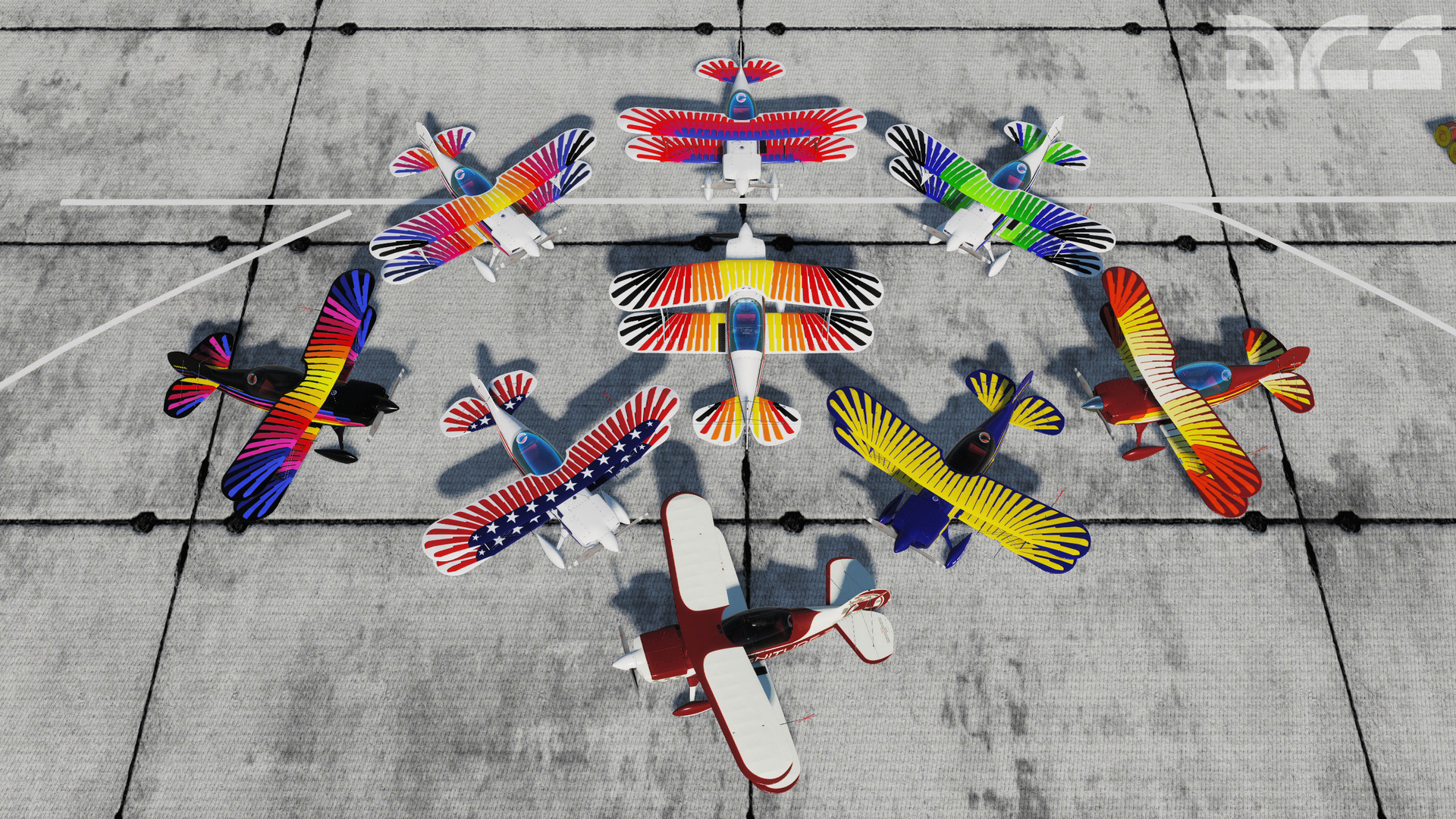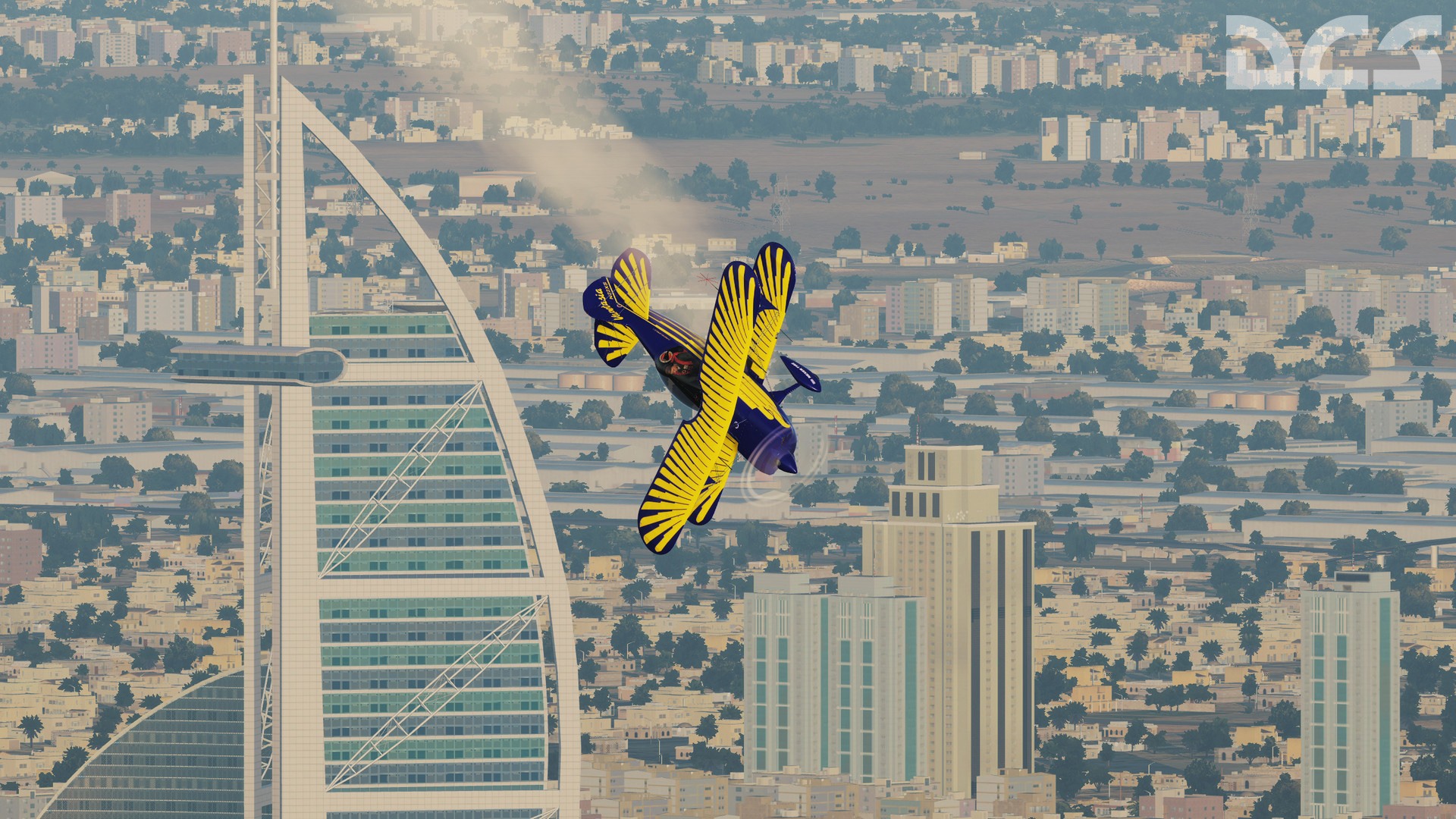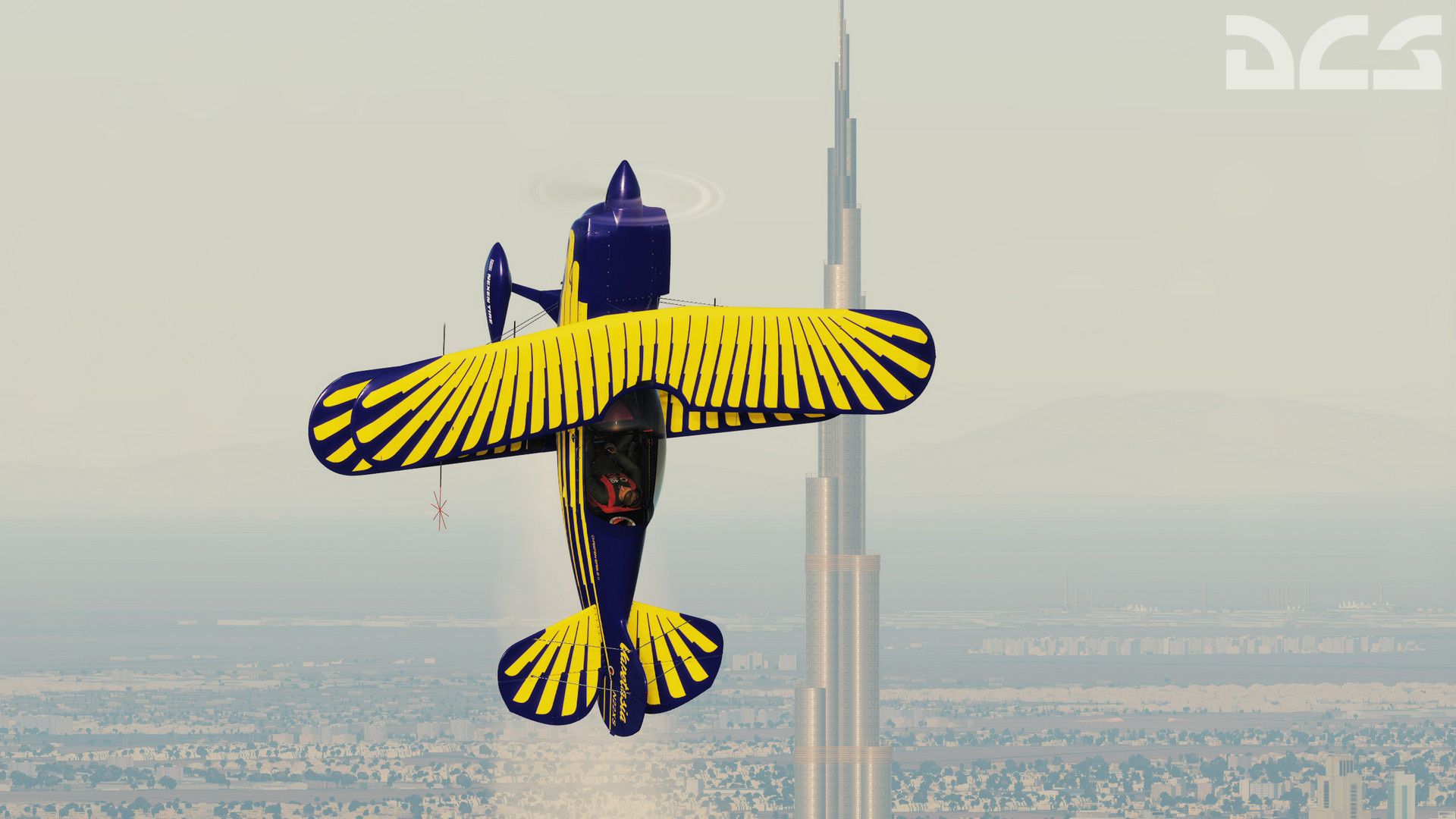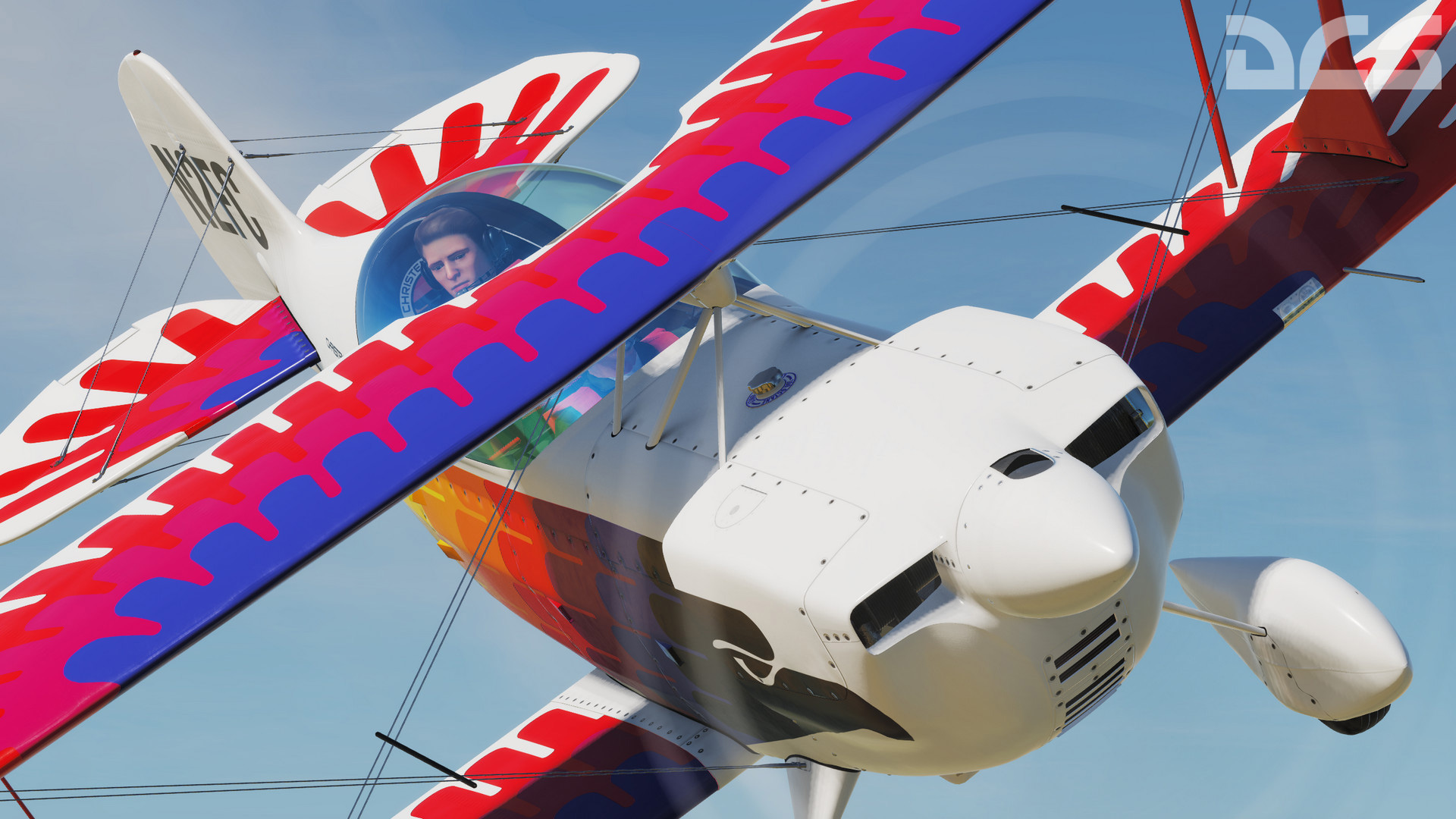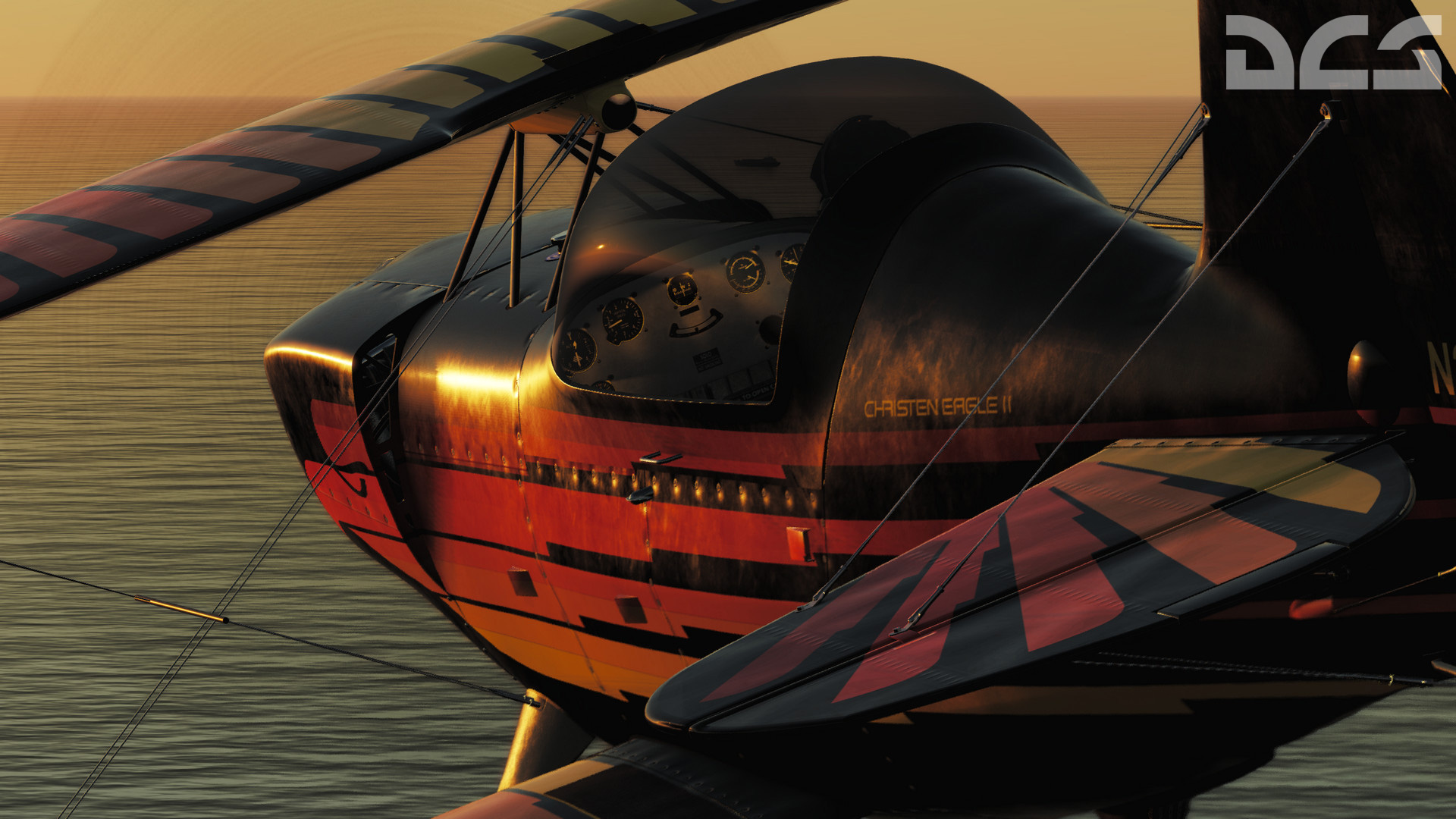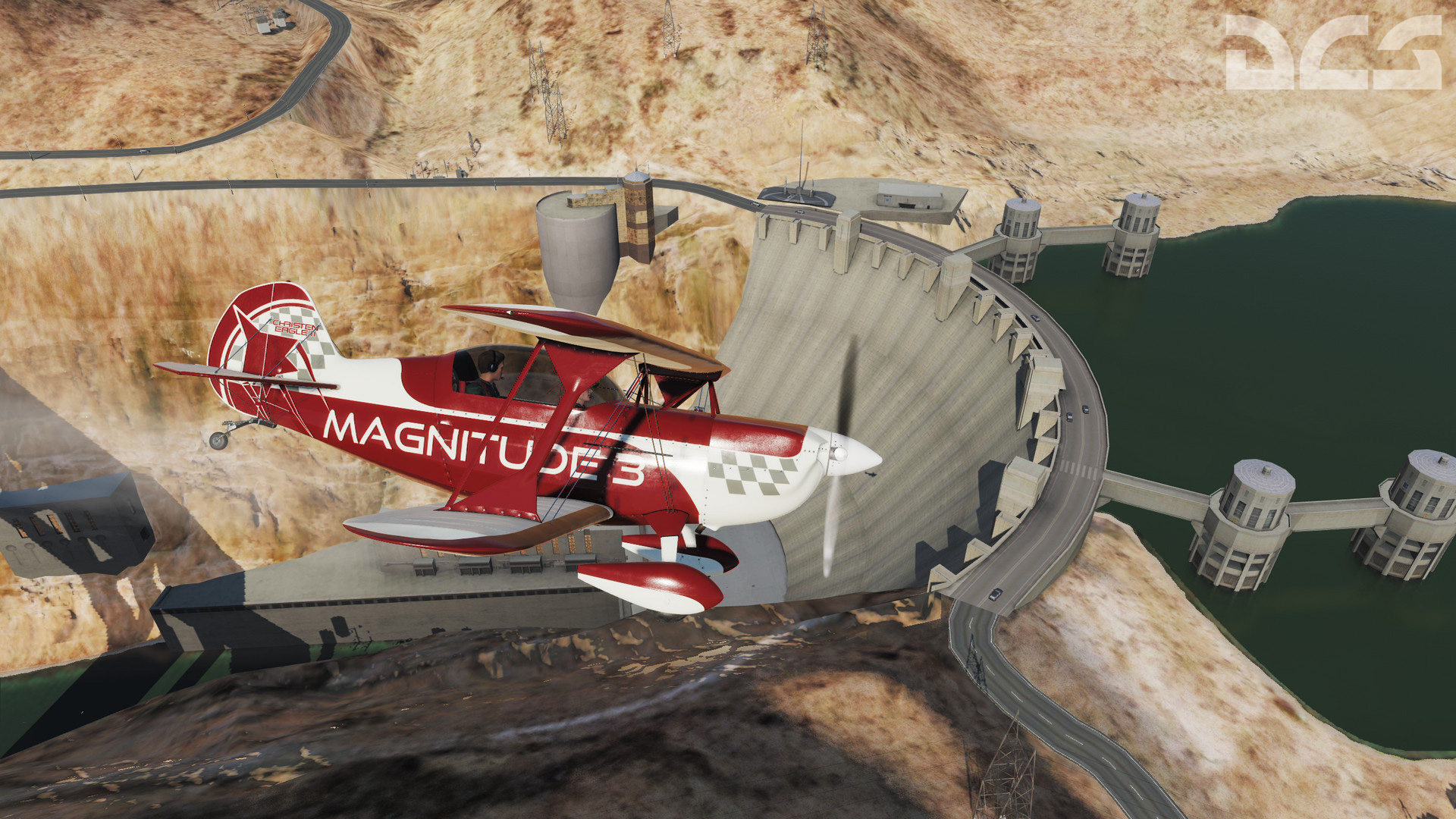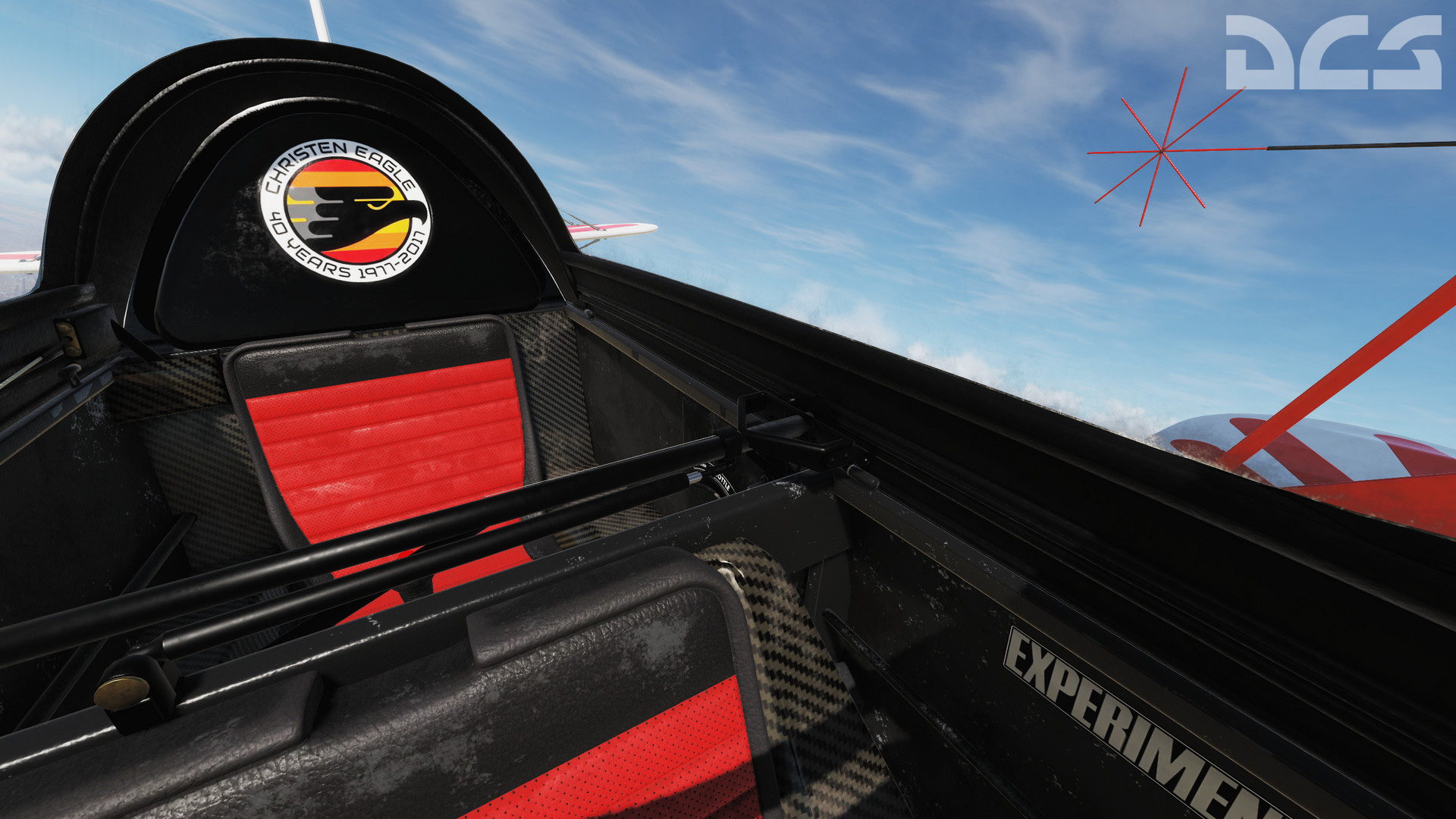DCS: Christen Eagle II
Available at the DCS Store and Steam
DCS: Christen Eagle II can be purchased on both the DCS Store and Steam.
This is an add-on module. You need to install the free Digital Combat Simulator before installing the module.
40th Anniversary of the aerobatics legend!
The Christen Eagle II, which later became the Aviat Eagle II in the mid-1990s, is an aerobatic sporting biplane aircraft that has been produced in the United States since February 1977. It was designed in 1976 by a P-51 Mustang pilot and aerobatic competitor Frank Christensen.
The Eagle is hard to be equaled in delivering sheer aerobatic fun: easy to control, powered by a superb modern engine and coupled with a sleek airframe, it will make every wanna-be pilot look like aerobatics master. The constant-speed propeller, fully inverted fuel and oil systems allows the pilot to concentrate purely on the flight maneuvers, turning the aircraft control into child’s play.
Easy to learn...

The aircraft is highly responsive in all axes to small changes in control position, and required control pressures are very light. This reduces the effort required for maneuvering the aircraft, but increases the need for extra caution on the part of a pilot whose previous experience is with aircraft types having limited capabilities.
... Hard to master

Because of low control pressures and high rates of response in all axes, the aircraft can enter stall maneuvers (for example, spins and snap rolls) with high initial rates in any axis. Pilots with limited experience in highly responsive aircraft must use extra caution to avoid accidental snap rolls which can be caused by inadvertent application of sudden or excessive control inputs.
Loop the loop!

The high power-to-weight ratio of the aircraft permits high maneuvering capability and relatively low entry speeds for many maneuvers. For example, a loop can be performed with an entry speed of 100 mph, whereas many aircraft types require relatively high-speed entry for looping maneuvers.
Twin cockpit fun!

Bring your date or your kid on-board the eagle for the ride of their lives. Double-cockpit controls allow the trainee in the front to prove his prowess as a wannabe pilot. The Eagle is so cool, even a 4 year old can fly it.
Loops, inverted stalls, hammerheads, inverted flight, there’s nothing the Eagle can’t do! Heck, you can even show your mother-in-law some stall maneuvers; just make sure she DOESN’T have the stomach for it!
Constant-speed propeller

The aircraft uses a constant-speed propeller, thus reducing the need for continuous attention to engine speed. Throttle position is therefore not particularly critical and engine rpm is automatically kept in a safe range.
Symmetrical airfoils

Aircraft performance during inverted or negative-g flight is very similar to performance during upright or positive-g flight. Aircraft attitudes during inverted flight and upright flight are nearly identical; excessive nose-up attitudes that are required during inverted flight with most aircraft types are unnecessary.

